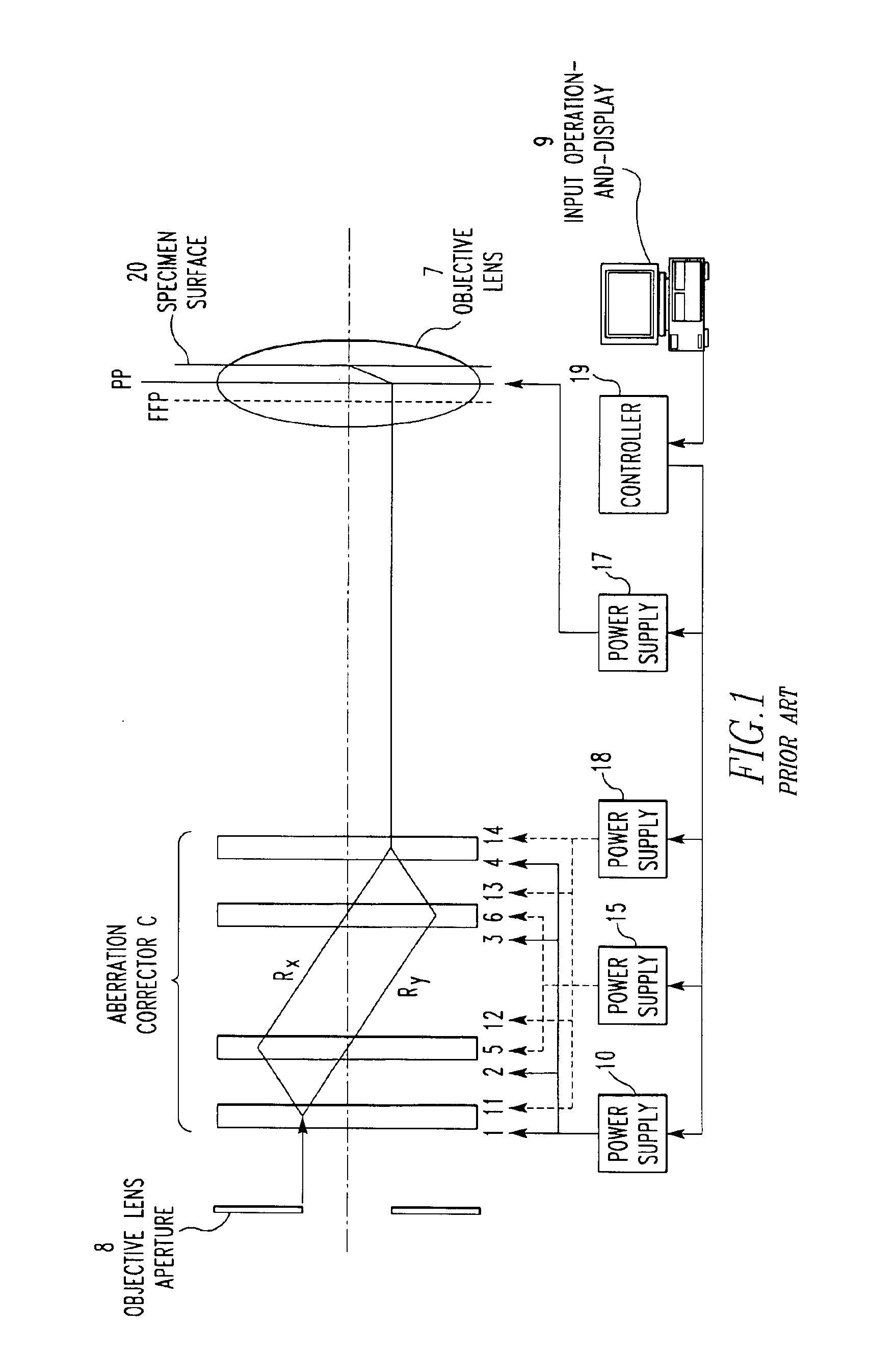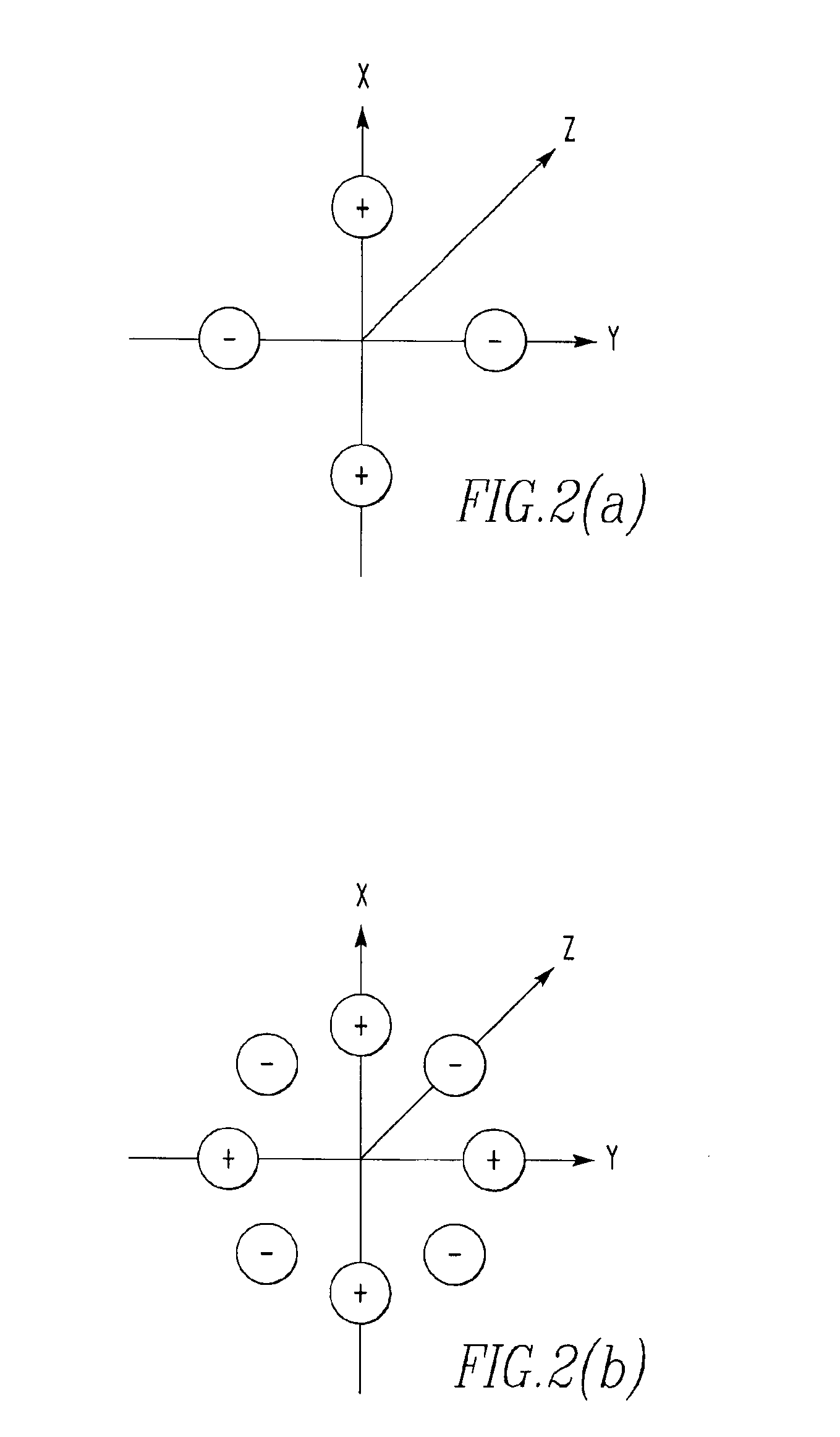Charged-particle beam apparatus equipped with aberration corrector
a charge-particle beam and corrector technology, applied in the direction of instruments, magnetic discharge control, beam deviation/focusing by electric/magnetic means, etc., can solve the problems of insufficient consideration of the stability of the aberration correction system, the withstand voltage of the elements is exceeded, and the instrument is more susceptible to noise introduced, so as to achieve stably and optimal aberration correction and minimize the diameter of the probe
- Summary
- Abstract
- Description
- Claims
- Application Information
AI Technical Summary
Benefits of technology
Problems solved by technology
Method used
Image
Examples
first embodiment
[0052]The preferred embodiments of the present invention are hereinafter described in detail by referring to the accompanying drawings. FIG. 5 shows the fundamental structure (first embodiment) of the present invention. This is an instrument for shooting a part of a charged-particle beam as a probe at a specimen and comprises four stages of electrostatic quadrupole elements 1, 2, 3, and 4 including two central quadrupole elements 2 and 3, two stages of magnetic quadrupole elements 5 and 6 for superimposing a magnetic potential distribution analogous to the electric potential distribution created by the two central quadrupole elements 2 and 3 on this electric potential distribution, an objective lens 7, transfer lenses 27a and 27b, an objective lens aperture 8 mounted in a part of the optical path, a manual input operation-and-display 9 having a display unit and permitting one to modify the accelerating voltage for imparting a given energy to the charged-particle beam and the working...
second embodiment
[0079]Accordingly, where the X- and Y-direction components of the aberration coefficients C5 and C3c cannot be made null at the same time, the operating conditions are so selected that blur of the particle probe is made as symmetrical as possible. That is, blur due to X-component and blur due to Y-component decrease to similar levels. The relation L1=L0 can be so selected that X- and Y-direction components become comparable to each other. This is used as the present invention. In practice, it is difficult to make the distance L1 variable. Therefore, the level of L0 is previously found by calculation or experiment and taken as a design distance L0. Furthermore, as shown in FIG. 6, focal length ƒb=ƒm giving a minimum value may be found, and the relation L1=L0 may be obtained by setting the distance L1 under this condition.
[0080]In the description of the first and second embodiments, the transfer lens system is made up of two stages. Similar advantages can be derived where a single-sta...
third embodiment
[0092]Supplementarily speaking, ƒa shown in FIG. 7 indicates the focal length of the transfer lens 27a adjacent to the aberration corrector C. In FIG. 8, the lens 27a does not exist and so the focal length of the transfer lens 27b is shown. That is, in the third embodiment shown in FIG. 8, ƒa of FIG. 7 corresponds to ƒb of FIG. 8, and the distance L1 of FIG. 7 corresponds to L2 of FIG. 8.
[0093]As described thus far, in the first, second, and third embodiments of the present invention, the aberration corrector C, the transfer lens 27b, and the objective lens 7 are set at the operating conditions which minimize the aberration coefficients C5 or C3c calculated by, or stored in, the manual input operation-and-display 9 from accelerating voltage Va, working distance WD, and probe current Ip set by the manual input operation-and-display 9.
[0094]In the configuration shown in the third embodiment of the present invention, where the length of the whole lens system is limited to a given lengt...
PUM
 Login to View More
Login to View More Abstract
Description
Claims
Application Information
 Login to View More
Login to View More - R&D
- Intellectual Property
- Life Sciences
- Materials
- Tech Scout
- Unparalleled Data Quality
- Higher Quality Content
- 60% Fewer Hallucinations
Browse by: Latest US Patents, China's latest patents, Technical Efficacy Thesaurus, Application Domain, Technology Topic, Popular Technical Reports.
© 2025 PatSnap. All rights reserved.Legal|Privacy policy|Modern Slavery Act Transparency Statement|Sitemap|About US| Contact US: help@patsnap.com



